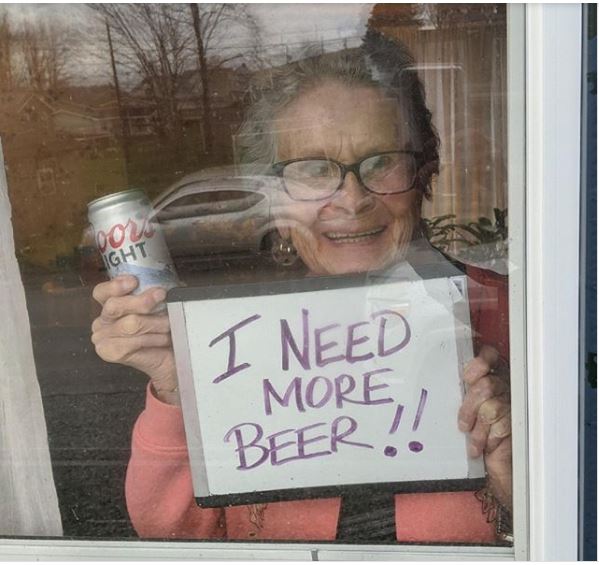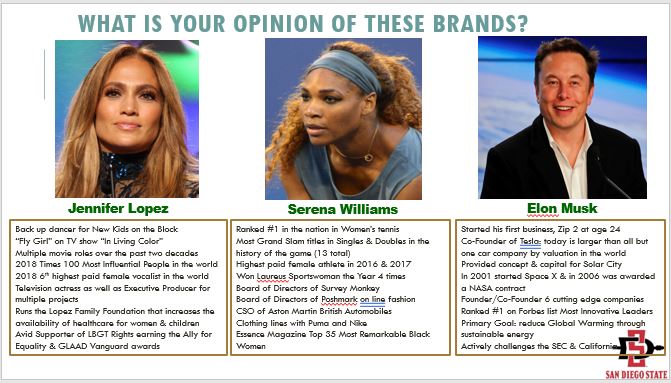How to Achieve Personal Branding Success
Five Key Takeaways From SDSU’s Personal Branding Workshop featuring Mark Lindner
On June 4, the Fowler College of Business partnered with Mark Lindner, general manager for Molson Coors Beverage Company and recognized expert in the personal branding industry, to host a virtual interactive workshop for San Diego State University students and alumni. The workshop was hosted by the college’s Career Management Center.

93-year-old woman with 'I Need More Beer' sign goes viral.
You may already be familiar with Lindner’s work.
He and a co-worker at Molson Coors made national news in April after they surprised a 93-year-old woman when a photo of her holding up a “I Need More Beer!!” sign during the COVID-19 lockdown went viral. Lindner and his co-worker fulfilled her request by delivering 10 cases of Coors Light, the woman’s brew of choice, to her home.
This gesture of goodwill proved to be a public display of excellent brand marketing by Lindner and Molson Coors.
Lindner and his wife Debbie have been supporters of SDSU and its students since 2015 when they made an initial gift to fund the Mark and Debbie Lindner Internship Scholarship within the Fowler College of Business. Lindner is based in Pennsylvania, but travels to San Diego regularly. Often times during his stays he can be found on campus sharing his expertise on personal branding, marketing and mentoring students.
Two months after the beer delivery, Linder shared his personal branding expertise with more than 90 SDSU students and recent graduates. Due to COVID-19 restrictions, the event was delivered virtually which allowed greater access for students and alumni out of the San Diego market.
Your Brand is What Differentiates You
Lindner defines a “brand” as something that differentiates a product, person, company,
or concept from others in the same market and the promise of value associated with
that brand.
“Exhibiting your personal brand is a 24/7 job,” Lindner explained. “It is who you are and what you want to convey to everyone you interact with. If your personal brand is correct and authentic, every conversation and activity will fit the narrative you are building with your brand.”Lindner defines a “brand” as something that differentiates a product, person, company, or concept from others in the same market and the promise of value associated with that brand.

Slide from Lindner's workshop.
Below are some key takeaways from Mark Lindner’s Personal Branding Workshop.
1. Understand Your Personal Brand: You need to get a thorough understanding of your personal brand to be able to determine
the skills and attributes where you excel. “What can you do better or different than
anybody else?” Understanding this will help you develop and build a successful personal
brand. In addition to skills and attributes you need to understand your ‘social opinion.’
This is how you are seen by others. “What value do you bring to the team and how do
you interact within a team environment?”
Linder also prompted attendees to think about “What value do you bring to the team
and how do you interact within a team environment?” with each person falling into
one of four categories: collaborator, leader, doer or disruptor.
- Collaborator: An individual who enjoys and has a talent for bringing different people and ideas together finding solutions from multiple parties.
- Leader: An individual who accepts full accountability for the team's actions & results. They understand and enjoy seeing their individual teammates succeed and highlights those successes. A leader provides clear direction and path for the team's success.
- Doer: An individual who takes direction and takes pride in completing a task that exceeds expectations.
- Disruptor: An individual who challenges the norm or herd mentality thought process; they ask the question "why not & what if". A positive disruptor works with the team identifying potential pitfalls of a plan or project.
You may find yourself in multiple categories but as Lindner explained, “every team I’ve ever had the pleasure of working with…has one of these four, and if you’re missing one of these four, it can be an issue.”
Another way to help you identify your personal brand is to find brand similarities in everyday companies. For example, an attendee mentioned their personal brand is Nike because they “just do it, they get things done.”
This worksheet provided by Lindner is a helpful tool for identifying and developing your personal brand.
2. Add Value: To add value within a group environment, you need to determine how your skills and strengths support a team. “What do people go to you for?” You must try to understand why the team needs you.
3. Maximize Your Brand’s Adoption: Once you determine your brand, you need to make sure your actions, mannerisms and appearance match your brand. “You want to keep conveying that brand so they (your managers) know that this is the person I want to have on my team for a long, long time,” Lindner noted.
4. Monitor Your Brand: Make sure you are clearly communicating that your brand matches “what you want it to stand for,” explained Lindner. One of the best ways to do this is to “fact check” your brand by asking others for feedback. The person you ask should not be a friend, but a colleague who you trust who can give you honest feedback.
5. Your Brand Should Evolve: Finally, your personal brand should evolve with experience, but one of the most challenging things to do is to change people’s perception of your evolved brand message. “It becomes even more important to advertise your brand message and consistently stay on that brand message,” he explained. People’s perception of your brand’s evolution “doesn’t happen immediately, it happens over time and controlling your brand message and advertising it becomes really critical.”
As the workshop drew to a conclusion, Lindner left the audience with one last piece of advice about finding a mentor. “Look for someone who believes in your brand…and who will stand up for you, though you will also have to be open to some criticism as well.”

